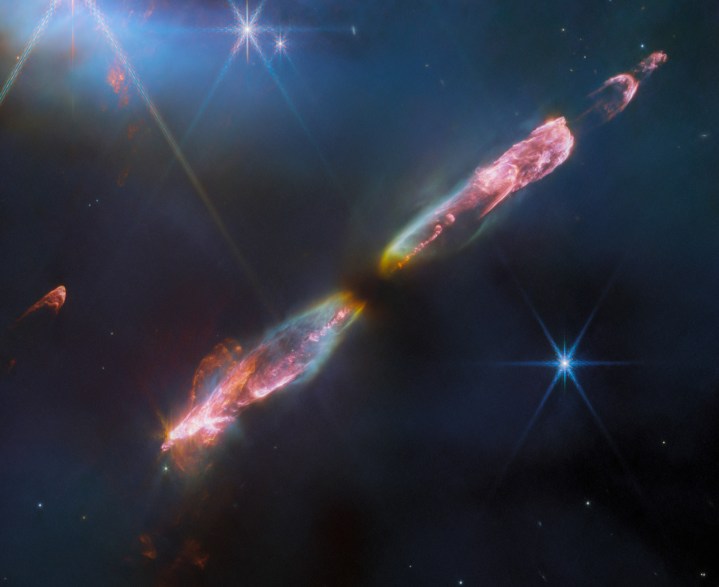A gorgeous new image from the James Webb Space Telescope shows a dramatic sight created by the outbursts of energy coming from a very young star. Called a Herbig-Haro object, this particular example is named HH 211 and shows the effects of huge jets of gas that are thrown out by the star and which collide with clouds of dust and gas to create stunning shapes.
The image was taken in the infrared wavelength in which Webb operates, which is ideal for observing hot objects like new stars without the view being blocked by dust, which is opaque in the visible light wavelength. The observations were made using Webb’s NIRCam instrument.

This is the second time Webb has imaged a Herbig-Haro object, as a pair of such objects called HH 46/47 were imaged in July of this year. That image was also taken with NIRCam, though it shows more background stars compared to the new image, while the recent image shows more details around the star at the center.
The star at the center of HH 211 will eventually grow up to become a star similar to our sun, but now it is just a few tens of thousands of years old, compared to our more than 4 billion year old sun. It also has a much smaller mass, at just 8% the mass of the sun. The very young age of the star is the reason for it giving off such powerful jets, as the star is gathering up material from the area around it and then flinging off a small amount of that material from its poles.
As the material travels outward at tremendous speeds of up to 60 miles per second, it creates a wave-like structure of gas that collides with other matter. This collision results in an effect called a bow shock, shaped like a curve, examples of which can be seen in both the lower-left and upper-right portions of the image.



